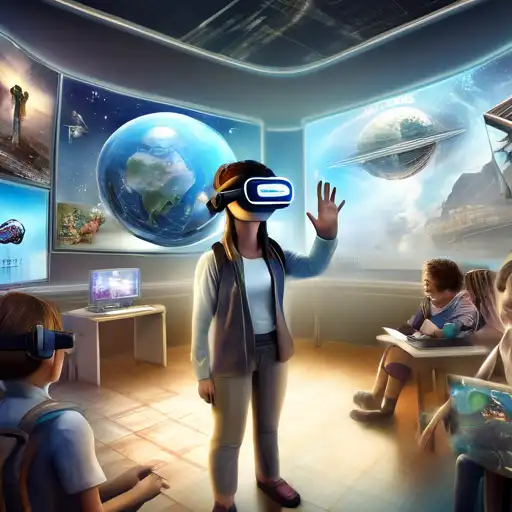Introduction to Virtual Reality in Education
Virtual Reality (VR) is rapidly transforming the educational landscape, offering immersive learning experiences that were once unimaginable. This technology enables students to explore historical sites, dissect virtual frogs, or even travel through space, all from the safety of their classroom. The potential of VR in education is limitless, providing a dynamic and interactive way to engage students.
The Benefits of Virtual Reality in Learning
VR in education offers numerous benefits, including enhanced engagement, improved retention rates, and the ability to simulate real-world scenarios. Students can practice surgeries, explore the depths of the ocean, or walk on Mars, making learning an unforgettable adventure. This hands-on approach caters to various learning styles, ensuring that every student can benefit.
Enhanced Engagement and Motivation
By immersing students in a 3D environment, VR captures their attention like never before. This heightened level of engagement leads to increased motivation and a deeper understanding of complex subjects.
Improved Retention Rates
Studies have shown that immersive learning experiences can significantly improve memory retention. VR's interactive nature ensures that students are not just passive recipients of information but active participants in their learning journey.
Implementing VR in the Classroom
Integrating VR into the curriculum requires careful planning and consideration. Schools need to invest in the right hardware and software, as well as train teachers to effectively use this technology. However, the investment is well worth it, as VR can revolutionize the way subjects are taught and learned.
Choosing the Right VR Tools
There are various VR tools available for educational purposes, from standalone headsets to smartphone-based solutions. Educators must select tools that align with their curriculum goals and budget constraints.
Training Educators
For VR to be effectively integrated into the classroom, teachers must be comfortable using this technology. Professional development programs can equip educators with the skills they need to harness the power of VR.
Challenges and Considerations
Despite its potential, VR in education faces several challenges, including high costs, technical issues, and the need for quality content. Schools must weigh these factors against the benefits to determine if VR is the right fit for their students.
Overcoming Barriers
To overcome these challenges, schools can seek grants, partner with tech companies, or start small with pilot programs. Collaboration and innovation are key to making VR accessible to all students.
The Future of VR in Education
As technology advances, VR will become more affordable and widespread, opening up new possibilities for education. From virtual field trips to collaborative global classrooms, the future of VR in education is bright and full of potential.
For more insights into innovative learning technologies, check out our article on The Impact of EdTech on Modern Education.
Conclusion
Virtual Reality is set to redefine the educational experience, making learning more interactive, engaging, and effective. By embracing this technology, educators can provide students with unparalleled opportunities to explore, discover, and learn in ways that were previously impossible. The journey into VR education is just beginning, and its potential to transform learning is immense.
